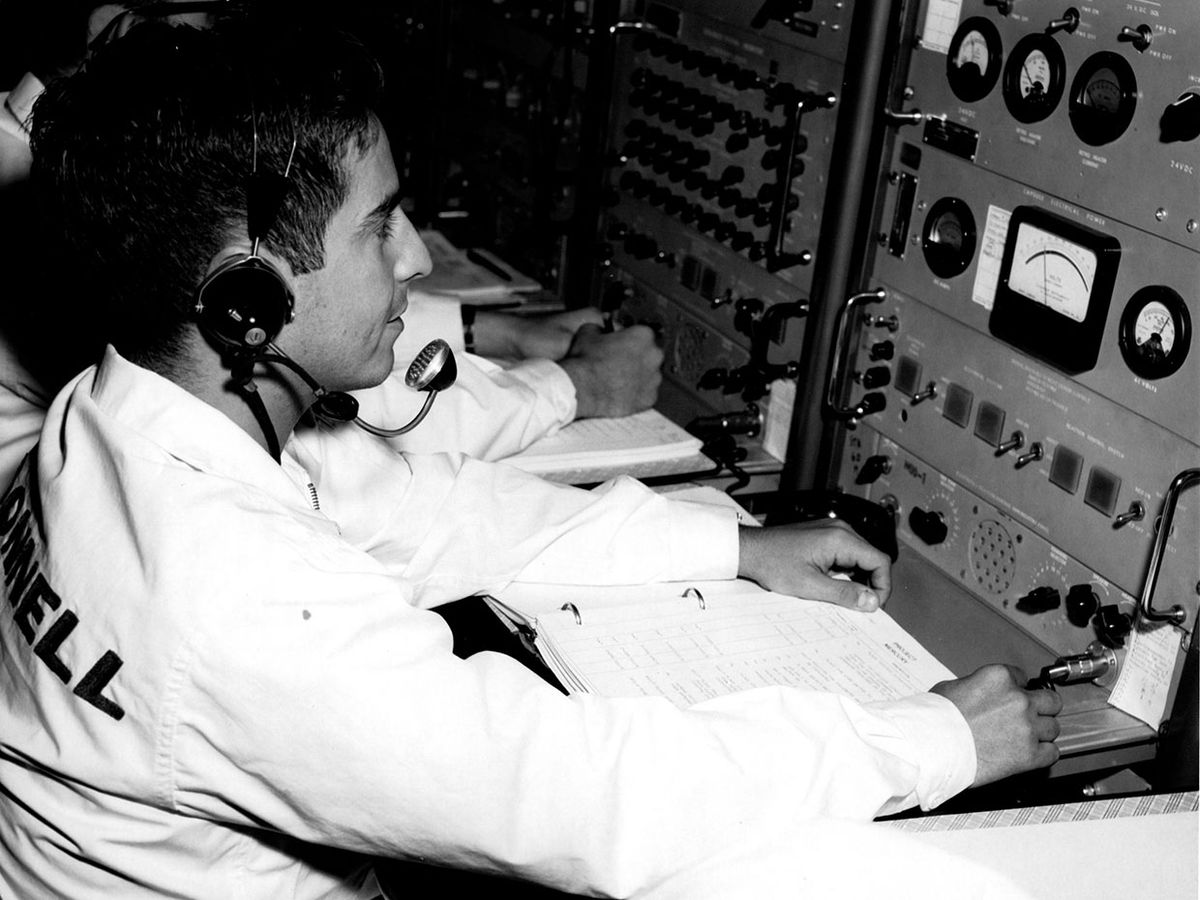
THE INSTITUTEThe IEEE History Center, which is leading the Footsteps: IEEE’s Commemoration of Human Space Travel effort, invited members to post their space-program experiences on the Engineering and Technology History Wiki.
IEEE Life Member Rufus Chavez reminisces about his projects and working with astronaut Alan Shepard, the first American to travel into space. Chavez also met Werhner von Braun, an aerospace engineer who led the development of Germany’s rocket technology and helped shape space science in the United States.
After graduating in 1959 with a bachelor’s degree in electrical engineering from Lamar University, in Beaumont, Texas, Chavez began working at McDonnell Aircraft in St. Louis. The company was NASA’s primary contractor for the manufacture of 20 Project Mercury satellite spacecraft. Mercury was the first human spaceflight program for the United States. McDonnell also produced the launch vehicles for the spacecraft—which carried supplies and were modified from Redstone and Atlas D missiles. Chavez was a member of the engineering design group.
In the mid-1960s, he was transferred to the Cape Kennedy Air Force Station, in Florida. There he designed modifications to the Mercury-Atlas spacecraft. Project Mercury also included the Mercury-Redstone, a model that von Braun worked on. The Freedom 7, the first U.S. human spaceflight, was a Mercury-Redstone spacecraft.

PROJECT MERCURY
The Mercury-Atlas 2, or MA-2, test flight took place on 21 February 1961. Chavez was responsible for the craft’s electrical monitor console, which was located in the blockhouse, a concrete building used to observe the proceedings.
“The flight started without a hitch,” Chavez recalled, “but suddenly all the spacecraft consoles began to display erratic readings, so the countdown clock was stopped.” He thought a possible cause could have been a cable that connected the MA-2 to equipment on the launchpad. The NASA flight director ordered a field technician to check the cable. According to Chavez, the technician confirmed that the connection was loose. Within a few minutes, the readings on the console returned to normal. The countdown clock was restarted, and the test flight was a success.
The next test occurred two months later, on 25 April. Seconds after takeoff, the spacecraft went off course, Chavez says, and the range safety officer ordered its self-destruction.
Each spacecraft has an escape system to keep the crew safe. The system can quickly separate the capsule from the rocket in case of an emergency. The system fires explosive bolts on the clamp ring that coupled the spacecraft to the rocket. Each bolt had a hollow shaft filled with explosive material.
According to Chavez, the 25 April blast propelled the capsule to a safe distance away from the rocket as it exploded. As the capsule jettisoned, its parachutes opened and it safely landed in the Atlantic Ocean. A helicopter later recovered it.
Following the explosion, Chavez says, he and his team were speechless and stood motionless. Shepard, who was in the blockhouse during the launch, quickly walked to the periscope and described the rescue operations to Chavez and other engineers who were monitoring the test.
After firefighters made sure the area was safe, the team held a debriefing session. Blockhouse personnel presented what they had observed, and it was suggested that a gyroscope in the rocket might have failed, Chavez says. A gyroscope guides the rocket, which explains why the rocket went off course, says Chavez.
The moderator wrapped up the session, and then Shepard addressed the group. According to Chavez, Shepard said he noticed the team was upset by the failure, but he said he was satisfied with the safety measures in place and was glad the engineers were able to assess the escape system, since it had never been used before. Shepard ended his speech by pounding his fist on the podium and saying, “I’m ready to go on the next flight.”
MEMORABLE MEETINGS
Chavez had the opportunity to interact with Shepard again when they shared an office in the blockhouse. One day, an employee from McDonnell’s publishing department came by to give Shepard the updated version of the capsule flight-operations manual. The astronaut threw away his old copy. Chavez retrieved the discarded manual and asked Shepard if he would sign the first page. Chavez considers it a cherished memento from his time working on Project Mercury.

When von Braun and his team of scientists and engineers working on the Mercury-Redstone asked to see the re-flight checkout trailer, Chavez got the chance to meet him.
The trailer housed instruments that NASA engineers used to assure that the machinery in a particular spacecraft was working properly. Chavez said he was told that no one except the facility’s three engineers, which didn’t include him, could give a tour of the trailer and explain what the instruments were used for. Von Braun and his team arrived an hour early, and Chavez was instructed to go to the trailer to warn those three engineers. As he was leaving, von Braun entered the trailer with his team. Von Braun introduced himself to Chavez, and when Chavez tried to exit the facility, the group blocked him so he stayed.
“It’s an experience I won’t forget,” Chavez says.
You can find Chavez’s complete account at the Engineering and Technology History Wiki, along with those of others who have shared their experiences. If you would like to share your story, you can submit it here.
This article was written with assistance from the IEEE History Center, which is funded by donations to the IEEE Foundation’s Realize the Full Potential of IEEE campaign.
